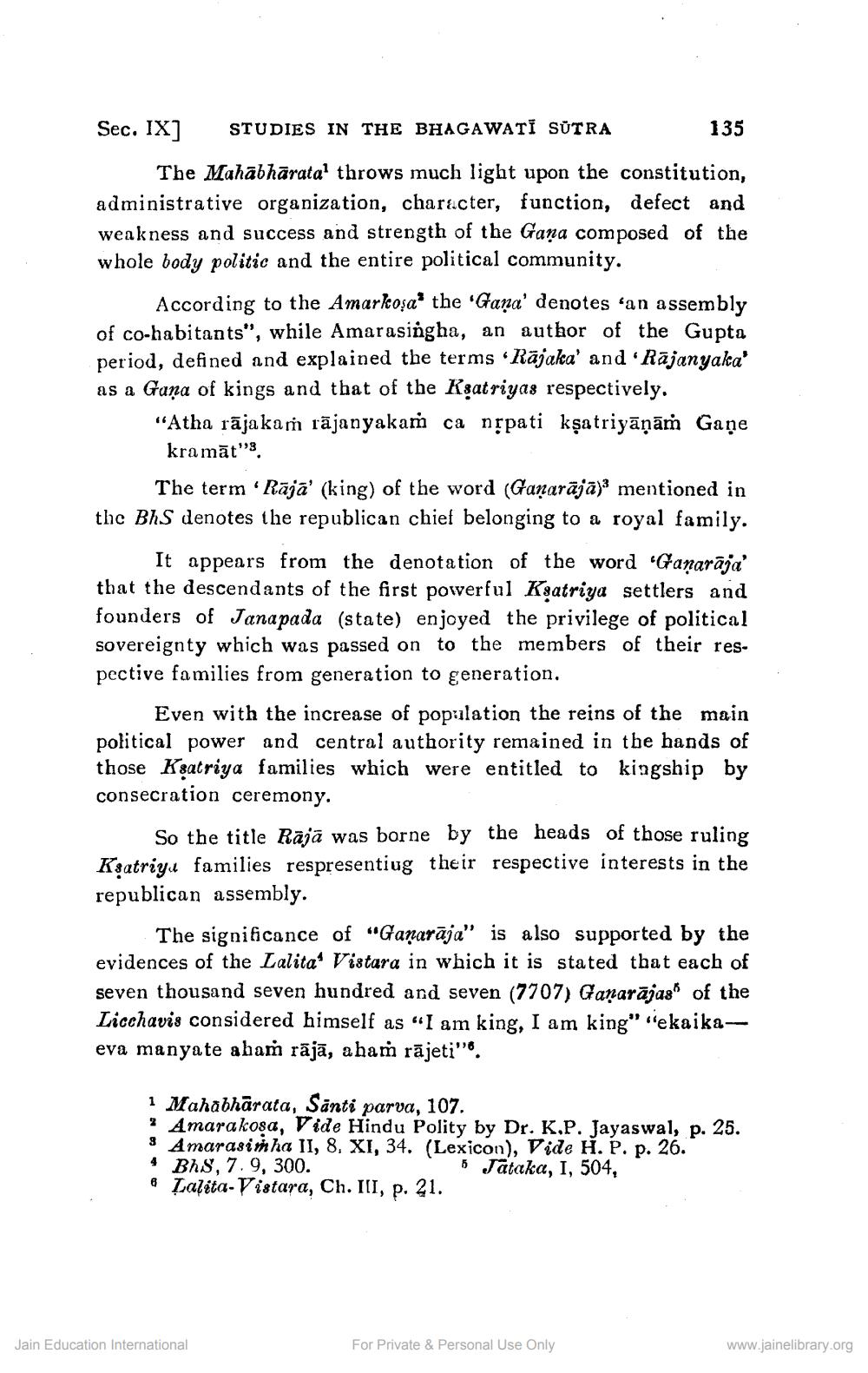________________
Sec. IX] STUDIES IN THE BHAGAWATI SÜTRA 135
The Mahābhāratal throws much light upon the constitution, administrative organization, character, function, defect and weakness and success and strength of the Gana composed of the whole body politic and the entire political community.
According to the Amarkoşa* the 'Gana' denotes san assembly of co-habitants", while Amarasingha, an author of the Gupta period, defined and explained the terms "Rājaka' and 'Rajanyaka' as a Gana of kings and that of the Ksatriyas respectively.
"Atha rāja kam rājanyakaṁ ca nộpati kşatriyāņāṁ Gaņe
kramāt's.
The term 'Rājā' (king) of the word (Ganarājā); mentioned in the BKS denotes the republican chief belonging to a royal family.
It appears from the denotation of the word "Ganarāja' that the descendants of the first powerful Ksatriya settlers and founders of Janapada (state) enjoyed the privilege of political sovereignty which was passed on to the members of their respective families from generation to generation.
Even with the increase of population the reins of the main political power and central authority remained in the hands of those Ksatriya families which were entitled to kiagship by consecration ceremony.
So the title Rajā was borne by the heads of those ruling Ksatriyı families respresentiug their respective interests in the republican assembly.
The significance of "Ganarāja" is also supported by the evidences of the Lalita Vistara in which it is stated that each of seven thousand seven hundred and seven (7707) Ganarājas" of the Licchavis considered himself as "I am king, I am king" "ekaika-- eva manyate abam rājā, a ham rājeti".
1 Mahabharata, Santi parva, 107. ? Amara kosa, Vide Hindu Polity by Dr. K.P. Jayaswal, p. 25. 8 Amarasimha II, 8, XI, 34. (Lexicon), Vide H. P. p. 26. 4 Bhs, 7.9, 300.
5 Jataka, I, 504, a Lalita-Vistara, Ch. III, p. 21.
Jain Education International
For Private & Personal Use Only
www.jainelibrary.org




